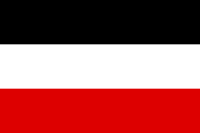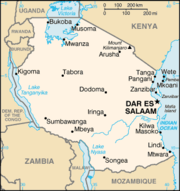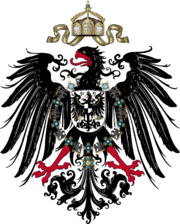Tanganyika
|
|||||||||||||||||||||||||||

.svg.png)


Tanganyika was an East African territory lying between the Indian Ocean and the largest of the African great lakes: Lake Victoria, Lake Malawi and Lake Tanganyika. From 9 December 1961 to 26 April 1964 it was also an independent state. Once part of the colony of German East Africa (German: Deutsch-Ostafrika), it comprised today's Rwanda, Burundi, and Tanzania with the exclusion of Zanzibar. After World War I the parts that are today's Rwanda and Burundi became a League of Nations mandate governed by Belgium. The major part, however, came under British military rule and was transferred to Britain under the 1919 Treaty of Versailles. This was confirmed by a League of Nations Mandate in 1922, later becoming a United Nations Trust Territory. Britain changed the name to the Tanganyika Territory.
On 9 December 1961 Tanganyika became independent as a Commonwealth Realm, and on 9 December 1962 it became the Republic of Tanganyika within the Commonwealth of Nations. In 1964, it joined with the islands of Zanzibar to form the United Republic of Tanganyika and Zanzibar, later in the year changed to the United Republic of Tanzania.
Although Tanganyika still exists within Tanzania, the name is no longer used formally for the territory. These days the name Tanganyika is used almost exclusively to refer to the lake.
Contents |
History
The name 'Tanganyika' is derived from the Swahili words tanga meaning 'sail' and nyika meaning an 'uninhabited plain' or 'wilderness'. At its simplest it might therefore be understood as a description of the lake — 'sail in the wilderness'.[1]
As European explorers and colonialists penetrated the African interior from Zanzibar in the second half of the 19th century, to Europeans Tanganyika came to mean, informally, the country around the lake, chiefly on the eastern side. In 1885 Germany declared that it intended to establish a protectorate, named German East Africa in the area, under the leadership of Carl Peters. When the Sultan of Zanzibar objected, German warships threatened to bombard his palace. Britain and Germany then agreed to divide the mainland into spheres of influence, and the Sultan was forced to acquiesce. After charges of brutality in the repression of the Maji Maji Rebellion of 1905, and reform under the leadership of Bernhard Dernburg in 1907, the colony became a model of colonial efficiency and commanded extraordinary loyalty among the indigenous peoples during the First World War. The German educational programme for native Africans, including elementary, secondary and vocational schools, was particularly notable, with standards unmatched elsewhere in tropical Africa[2][3].
After the defeat of Germany in 1918 in World War I, under the Treaty of Versailles German East Africa was divided among the victorious powers, with the largest segment being transferred to British control (except Rwanda and Burundi which went to Belgium, and the small Kionga Triangle which went to Portuguese Mozambique). A new name was needed, and Tanganyika was adopted by the British for all of its part of the territory of German East Africa.
In 1927, Tanganyika entered the Customs Union of Kenya and Uganda, as well as the East African Postal Union, later the East African Posts and Telecommunications Administration. Cooperation expanded with those countries in a number of ways, leading to the establishment of the East African High Commission (1948–1961) and the East African Common Services Organisation (1961–1967), forerunners of the East African Community. The country held its first elections in 1958 and 1959. The following year it was granted internal self-government and fresh elections were held. Both elections were won by the Tanganyika African National Union, which led the country to independence in December 1961. The following year a presidential election was held, with TANU leader Julius Nyerere emerging victorious.
Tanganyika ceased to exist as a nation in 1964, when it was loosely united with Zanzibar, to form the nation of Tanzania.[4]
See also
- German East Africa
- Postage stamps and postal history of Tanganyika
- Tanganyika laughter epidemic
References
- ↑ John Knouse: A Political World Gazetteer: Africa website accessed 1 May 2007.
- ↑ East, John William. "The German Administration in East Africa: A Select Annotated Bibliography of the German Colonial Administration in Tanganyika, Rwanda and Burundi from 1884 to 1918." [London? 1989] 294 leaves. 1 reel of microfilm (negative.) Thesis submitted for the fellowship of the Library Association, London, November 1987."
- ↑ Farwell, Byron. The Great War in Africa, 1914–1918. New York: W. W. Norton & Company. 1989. ISBN 0393305643
- ↑ Kingfisher Geography encyclopedia. ISBN 1-85613-582-9. Page 206
- Gordon-Brown, A., FRGS, (editor), The East Africa Year Book and Guide, London, 1954, 87pps, with maps.
- Hill, J.F.R., and Moffett, J.P., Tanganyika - a Review of its Resources and their Development, published by the Government of Tanganyika, 1955, 924pps, with many maps.
- Mwakikagile, Godfrey, Life in Tanganyika in The Fifties, New Africa Press, 2008, 428pps, with maps and photos.
- Moffett, J.P., Handbook of Tanganyika, published by the Government of Tanganyika, 1958, 703pps, with maps.
External links
|
|||||||||||||||||||||||||||||||||||||||||||||
|
||||||||||||||||||||||
